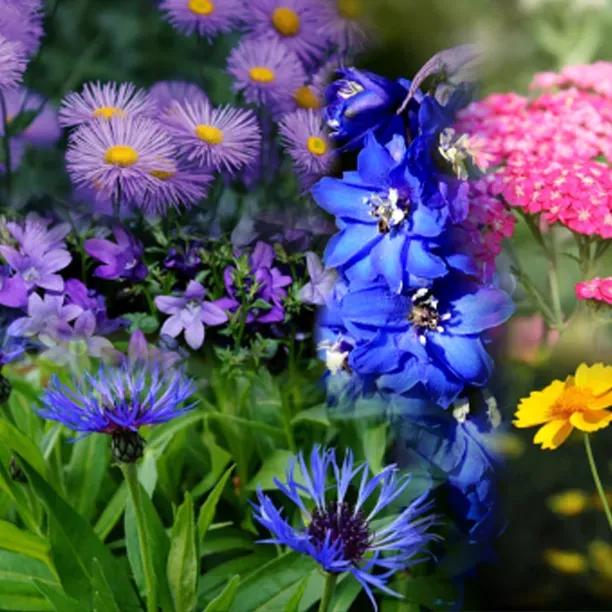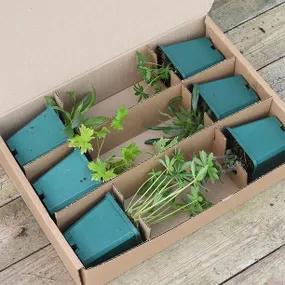Herbaceous Collection, Cottage Garden
Honest Delivery PricesMix of 3 or 6 Varieties
Pot Grown Herbaceous Perennials- Chosen by our garden design experts.
- 6 x 9cm Pots, or 3 x 1L pots
Recommended extras
Description
Cottage Garden Herbaceous Perennial Collection: 6 x 9cm Pots, or 3 x 1 Litre Pots
Capture the charm of the English cottage garden with our carefully selected collection of eight plants that make great cutting flowers and define a nostalgic style which has been a popular favourite for generations: old-fashioned beauty that is perfect for a busy modern life. Some of them, like Echinacea, are also medicinal herbs.
Browse our other herbaceous perennial collections, or all of our perennial plants.
Features
- Different plants selected by our garden-design experts to create beautiful cottage-garden displays of your own
- 9cm Pots or 1 Litre Pots
Our carefully-curated range of colourful plants includes, but is not limited to, the following:
Achillea, Alcea, Alchemilla, Anemone, Aquilegia, Aster, Campanula, Centaurea, Centranthus, Cerastium, Coreopsis, Crocosmia, Delphinium, Dianthus, Digitalis, Echinacea, Echinops, Echium, Eryngium, Euphorbia, Gaillardia, Gaura, Geranium, Geum, Helenium, Hemerocallis, Hosta, Iris, Knautia, Leucanthemum, Linaria, Lupinus, Lychnis, Nepeta, Papaver, Penstemon, Rudbeckia, Salvia, Sisyrinchium, Solidago.
Please note: We regret we cannot accept requests for specific plants. We select a mix of the best at the time of delivery. The pictures are examples only, your mix may vary.
Growing Cottage Garden Perennials
Relatively hardy and easy to grow, these traditional favourites will make do with most well-drained soils and some watering in dry summer weather. A good amount of sun and shelter are necessary for best results.
Every plant comes with its own instructions.
Cottage Garden Perennials in Your Design
One of the easiest to grow in principle. The style is unpretentious, fluid and relaxed, and always works well with our white and pink perennial collections.
Planting Instructions
Did You Know?
Although we naturally see cottage gardens through rose-tinted spectacles, their abundance and higgledy-piggledy form and colour stemmed from necessity, as well as romance (which is at least a bit necessary). The Black Death in the Medieval era is said to have led the way; the hardships of that time drove the local production of essential items, and people's gardens had to earn their keep every way that they could, fitting a lot into a small space by packing in medicinal herbs and cutting flowers between the animal pens and fruit trees. Later, the vision was sustained by Victorians who moved the farm animals out of sight and amplified the flowers into that famously informal, loose style of planting that never goes out of fashion.



